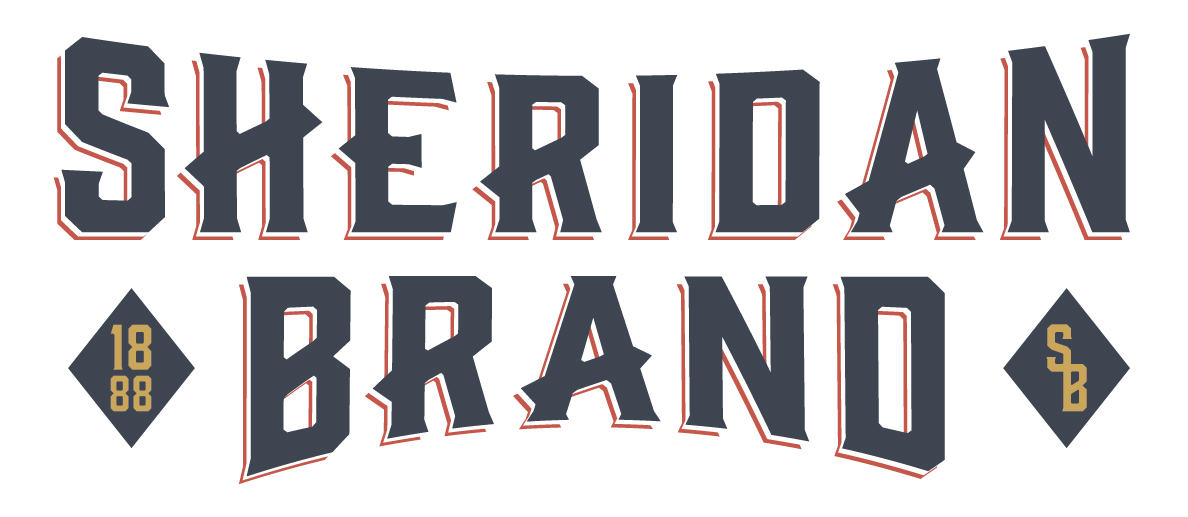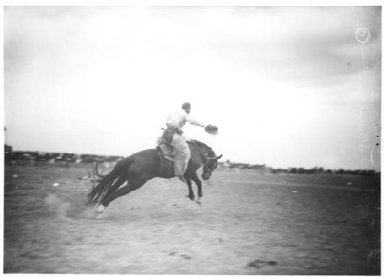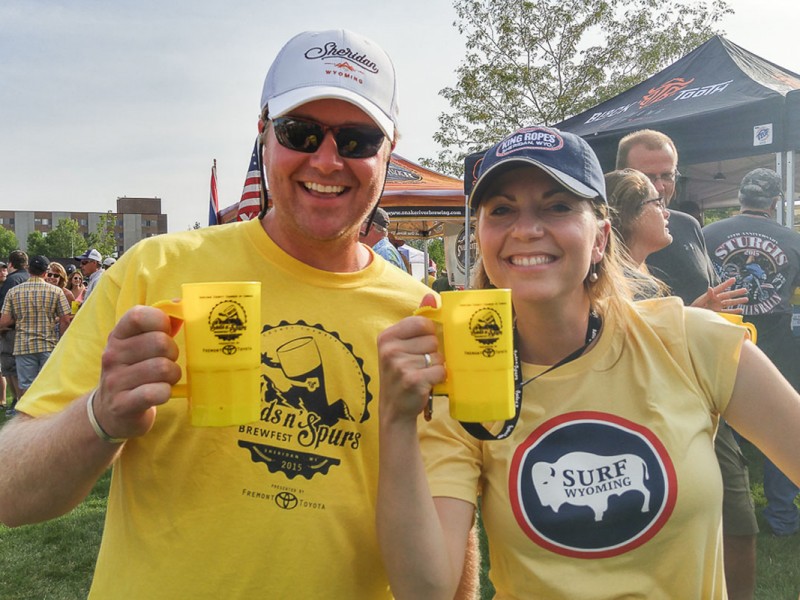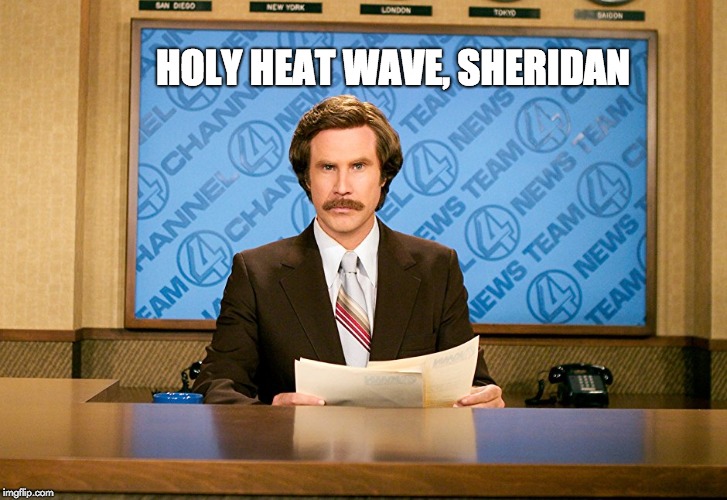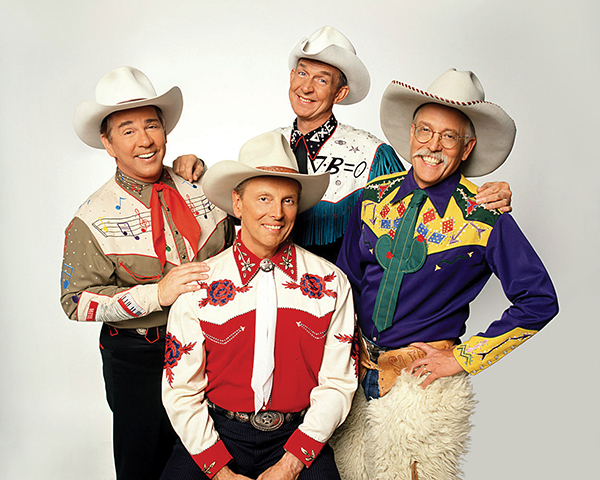~CONTENT POWERED BY FLOOD MARKETING~
One hundred years ago today, Wyoming’s most iconic figure was killed by a premeditated bullet fired from the barrel of Tom Horn’s rifle.
Sure, that statement has a nice dramatic flair, but, to be accurate, “humanely destroyed” would certainly be a more just description of Steamboat’s passing. And Tom Horn died in 1903, so he clearly didn’t squeeze the trigger. Nonetheless, it has been a century since the legendary bucking horse synonymous with Wyoming’s identity was put down in the Capital City.
 From license plates to commemorative quarters to football helmets, Wyoming is — and will forever be — best recognized by its trademark Bucking Horse and Rider, which drew at least some inspiration from the life and lore of the rough stock star saluted as the “Lord of the Plains.”
From license plates to commemorative quarters to football helmets, Wyoming is — and will forever be — best recognized by its trademark Bucking Horse and Rider, which drew at least some inspiration from the life and lore of the rough stock star saluted as the “Lord of the Plains.”
Local writer Craig Johnson — New York Times bestselling author of the Longmire mystery series adapted to a critically-acclaimed television drama (#longlivelongmire!) — provides a typically charismatic and succinct biography for “the horse that couldn’t be ridden” via the venerable voice of Absaroka County Sheriff Walt Longmire in the novella Spirit of Steamboat, which was this year’s featured One Book Wyoming selection.
Take the controls, Sheriff…
Glancing around the cockpit, I wondered at the turn of the fates that would put a hurt Japanese child in such a beast like Steamboat — the same kind of plane that Lucian had flown thirty seconds over Tokyo to drop bombs on her ancestors, but this time on a suicide mission to carry a wounded Japanese child to Denver on a hellacious, storm-filled night.
As Lucian closed the window, put on his snow-patched Stetson, and continued giving the bomber more throttle, I amused myself by thinking about the real Steamboat, the horse that had become the longest-running license plate motif in the world.
Steamboat didn’t start there or on the patches of the Wyoming National Guardsmen who served in the 148th Field Artillery Regiment in World War I, but rather as a colt foaled on the Frank Foss Ranch near Chugwater, Wyoming, the progeny of a massive Percheron stallion and a hot-blooded Mexican mare. A product of his breeding, he grew strong, so strong in fact that when castrated, he slammed his head against the ground so hard that he broke cartilage loose in his long nose, resulting in a distinctive whistling sound when he breathed – hence the name, Steamboat.
For many a rodeo cowboy, it was the last thing they heard before hitting the ground.
 Solid black with three white stockings, the horse enjoyed parades and Wild West shows, where he was known to keep time to the music the bands played; but, docile while being handled, there was something he could not abide – riders. The bucker would not allow a man to stay on top of him, and, rapidly becoming the toast of stock providers, he performed in every major rodeo in the United States for years.
Solid black with three white stockings, the horse enjoyed parades and Wild West shows, where he was known to keep time to the music the bands played; but, docile while being handled, there was something he could not abide – riders. The bucker would not allow a man to stay on top of him, and, rapidly becoming the toast of stock providers, he performed in every major rodeo in the United States for years.
There is a great deal of controversy as to who the rider is on the license plate, from Jake Maring and Guy Holt to Stub Farlow, but there is no controversy as to the fact that none of them ever rode the horse known as the Lord of the Plains or the King of the Hurricane Deck to a standstill. Allen True captured the spirit of the animal for the princely sum of seventy-five dollars when Secretary of State Lester C. Hunt commissioned him to depict the horse and rider as the design for the 1936 Wyoming license plate.
Steamboat’s story didn’t end well, though – the legendary horse fell victim to blood poisoning due to an altercation with a barbed-wire fence while penned during a lightning storm in Salt Lake City. He was returned to Wyoming where veterinarians made the critical judgment that there was no way to save the swollen, dying horse, and a rifle was fetched to dispatch the animals and end its suffering – the gun, coincidentally, having been owned by another famous Wyoming legend, Tom Horn.
On a cold, gray October 14 in 1914, the blast of that rifle ended the career of one of the greatest bucking horses of all time. Legend promotes the story that Steamboat was buried under the hard-packed earth of Frontier Park in Cheyenne, a place where uncounted cowboys and mighty buckers have gone seat to saddle, but the legend belies the truth. I’d spoken with one of the men who was there. Standing under the old wooden bleachers with Paul R. Hanson, he told me, “People say that he was buried at Frontier Park, but that’s not true.” The old cowpuncher looked off to the distance, looking for something, maybe some way to bring things back and change them. “He was buried a the old city dump where he was destroyed. A desecration, Walter, and that’s for sure.”
Boy howdy.
LEAD PHOTO CREDIT: WYOMING STATE ARCHIVES, “CLAYTON DANKS ON STEAMBOAT” FROM THE STIMSON COLLECTION
 Thanks to Craig Johnson for allowing Sheridan Brand to share his eloquent words and wit. If you’d like to hear Craig Johnson share his own eloquent words and wit, head to Sheridan Stationary Books and Gallery Thursday, October 16 @ 5:30 PM for a special reading and book signing of his latest work, Wait for Signs, a compilation of twelve Longmire short stories. For more info, click on the CALENDAR tab at the top of the page.
Thanks to Craig Johnson for allowing Sheridan Brand to share his eloquent words and wit. If you’d like to hear Craig Johnson share his own eloquent words and wit, head to Sheridan Stationary Books and Gallery Thursday, October 16 @ 5:30 PM for a special reading and book signing of his latest work, Wait for Signs, a compilation of twelve Longmire short stories. For more info, click on the CALENDAR tab at the top of the page.
